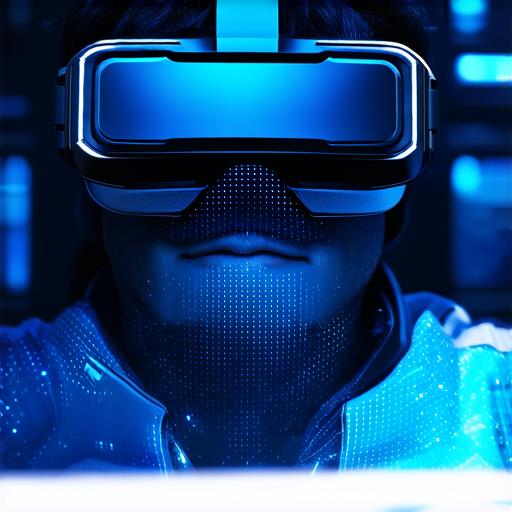Virtual reality (VR) technology has been rapidly advancing in recent years, and its potential impact on society is vast. From gaming and entertainment to healthcare and education, virtual reality has the potential to revolutionize how we interact with digital environments and each other.
Virtual Reality Technology: A Brief Overview
Virtual reality is a computer-generated simulation of a three-dimensional environment that can be interacted with using special electronic devices such as headsets or gloves. These devices use sensors to track movement and translate it into changes in the virtual world, creating an immersive experience for the user. The technology has come a long way since its early days, with advancements in hardware and software leading to more realistic and interactive experiences.
One of the key factors driving the growth of virtual reality is its ability to create highly engaging and immersive experiences. By simulating real-world environments, virtual reality can provide users with a level of interaction and engagement that traditional media cannot match. For example, a virtual reality game might allow players to explore a fantastical world or engage in combat with realistic opponents in a way that would be impossible in the real world.
Another area where virtual reality is showing great promise is healthcare. Virtual reality can be used to create simulations of medical procedures and surgeries, allowing doctors to practice and perfect their skills in a safe environment before performing them on real patients. It can also be used for pain management and therapy, providing patients with a sense of immersion that can help distract them from pain or discomfort.
Virtual reality is also being explored for use in education. By creating virtual simulations of historical events or scientific concepts, students can gain a deeper understanding of complex topics in a way that is both engaging and memorable. Virtual reality can also be used to create virtual field trips, allowing students to explore distant locations or time periods without ever leaving the classroom.

Potential Applications of Virtual Reality
The potential applications of virtual reality are virtually limitless. Here are just a few examples:
- Architecture and design: Virtual reality can be used to create 3D models of buildings and other structures, allowing architects and designers to explore different layouts and designs in a virtual environment before making physical changes.
- Training and simulation: Virtual reality can be used to simulate real-world scenarios for training purposes, such as military simulations or flight simulations for pilots.
- Gaming and entertainment: Virtual reality can provide gamers with a highly immersive gaming experience that is unlike anything they have experienced before. It can also be used in other forms of entertainment, such as movies or live events.
- Tourism and travel: Virtual reality can allow people to explore distant locations without ever leaving their homes. This could be particularly useful for people who are unable to travel due to health issues or financial constraints.
- Mental health and therapy: Virtual reality can be used to create simulations of real-world environments that trigger anxiety or PTSD, allowing patients to confront these triggers in a safe environment. It can also be used for exposure therapy, where patients are gradually exposed to increasingly challenging situations in a virtual environment.
Challenges and Limitations
Despite its potential, virtual reality technology is not without its challenges and limitations. One of the biggest challenges is the high cost of equipment, which can make it difficult for individuals or small businesses to adopt the technology. There are also concerns about the potential health effects of prolonged use of virtual reality, such as motion sickness or eye strain.
